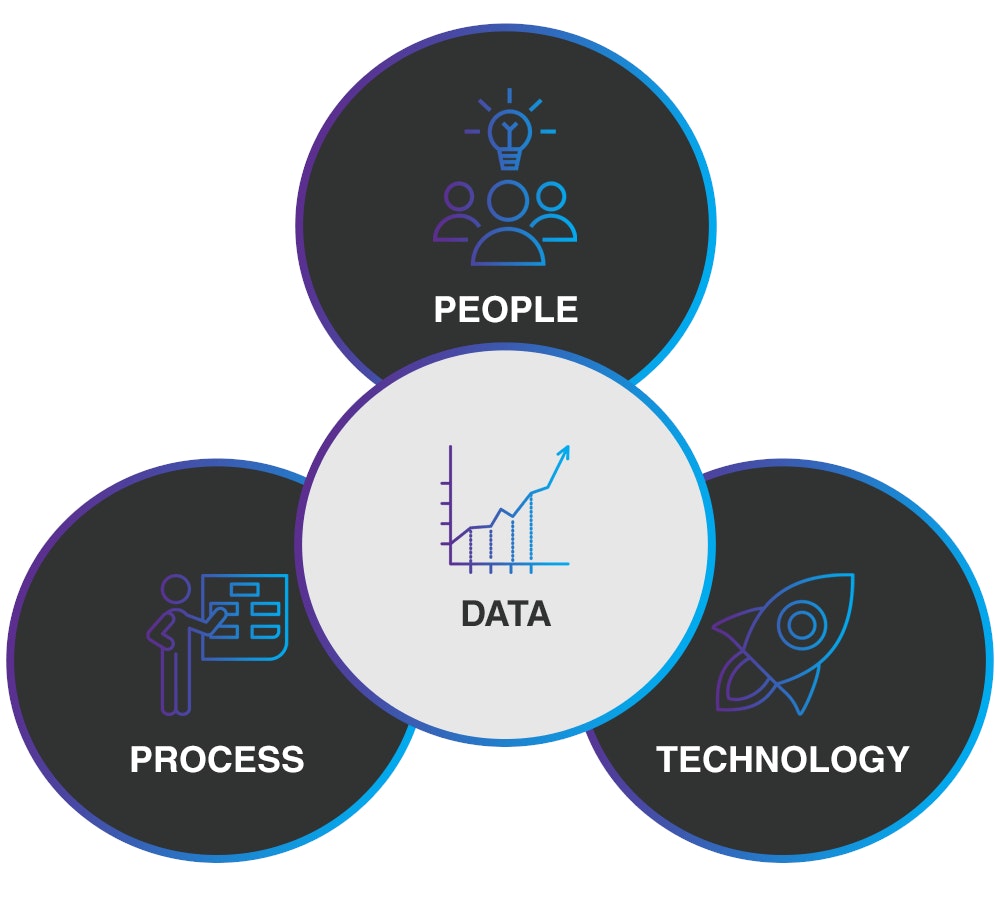Understanding PPTD: A Modern Framework for Sustainable Transformation

*Updated 26 March 2025*
In a time where we are defined by complexity, disruption, and rapid digital acceleration, businesses are increasingly searching for frameworks that go beyond buzzwords — models that genuinely help them navigate change, align teams and build for the future. One such evolution is the shift from the traditional People, Process, Technology model to a more complete and contemporary approach: PPTD – People, Process, Technology, and Data.
This isn’t just an update to a familiar acronym. It reflects a deeper shift in how organisations operate, and more importantly, how they learn, adapt, and grow.
Let’s unpack each element — not in isolation, but as part of a connected system.

People
People have always been central to organisational success, but their role has fundamentally changed. In the past, the focus was often on managing employees within structured environments — offices, departments, hierarchies. But in today’s hybrid, cross-functional world, people are not just resources — they are agents of innovation. Their expectations have evolved, shaped by flexible work, shifting values, and a desire for purpose and autonomy.
Successful organisations are those that treat their people not as cogs in a process, but as collaborators in continuous evolution. That means designing systems that allow for freedom and structure. It means investing in digital fluency, not just digital tools. And it means understanding that engagement isn’t about policies, but about creating meaningful, connected experiences — wherever work happens.
Process
Process is the often-invisible infrastructure of an organisation — the way decisions get made, work gets done, and value gets delivered. For years, businesses saw process improvement as a way to cut costs or gain efficiency. Today, the stakes are higher. The pace of change — in markets, technology, customer expectations — means that static processes become liabilities. What’s needed instead are processes that are adaptable by design.
This doesn’t mean abandoning structure. It means designing workflows that can evolve — workflows informed by feedback, measured by data, and flexible enough to respond when reality shifts. Businesses that thrive today don’t just optimise processes; they make process agility part of their DNA.
Technology
Technology is the enabler — but it’s no longer just about hardware or software. It’s about how seamlessly your systems connect, how intuitively they support your teams, and how intelligently they evolve over time. In the past, tech decisions were often driven by internal needs — "How do we manage X more efficiently?" Now, they're increasingly driven by external experience — "How do we make this easier for our customers? For our people?"
Modern technology strategy is less about tools, and more about ecosystems. It’s not enough to adopt the latest platform; the value lies in how well those tools integrate with others, how they support human decision-making, and how they adapt to changing business models. The smartest organisations use technology to amplify human potential — not replace it.
Data
And then there’s data — the most significant addition to this framework. For many organisations, data has existed on the sidelines: collected, stored, and analysed periodically. But in a world where every interaction, every decision, every customer journey generates data, the role of information has shifted from passive record to active driver.
Data is no longer just a resource — it’s an operational layer. It tells you how your people are working, where your processes break down, whether your technology is delivering value and what your customers need next. But for data to play this role, it has to be trusted, accessible and actionable. That’s where many businesses fall short — not due to a lack of data, but due to fragmented systems, unclear ownership or low data literacy.
Bringing data into the core of the PPT framework doesn’t just make sense — it’s necessary. Because without data, the rest of the model can’t evolve.
Why PPTD Matters
When you treat People, Process, Technology, and Data as a unified system — not isolated components — transformation becomes more than a project. It becomes a mindset. Each element informs and enables the others. Data guides how you improve processes. Technology connects your teams. Your people create and interpret the insights that power innovation.
This is what makes PPTD powerful: it’s not just a checklist. It’s a way to look at your organisation as a living, learning system — one that is capable of adapting not just to survive, but to lead.